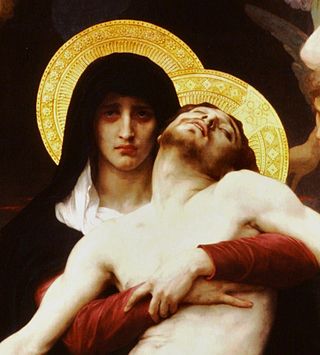
The Spiritual Works of Mercy – Forgiving Offenses
The Works of Mercy recommended by the Church do not have priority over one another, but all are of equal importance
How can offenses be forgiven? Who can answer this question? Can Mercy from pain come to forgiveness? There are those who have answered not with words, but with actionable and indelible example.

Some artists, too, have summarized the suffering endured and forgiveness, in some images that remain not only masterpieces of art, but above all, a reason for reflection and teaching. Bramante’s “Christ at the Column” (1444/1514), should be observed at least for a few minutes to get a partial answer to the initial question.
The author, born to a poor family near Urbino, was trained in the milieu of the Montefeltro family and was soon called to Milan, where he left architectural works of great importance. He does not have the reputation of being a great painter, but this painting from 1490 in the Brera Museum is the only panel painting of certain attribution, and it is of such beauty that it leaves us spellbound. As we know, Christ’s whole life was lived, over and above everything else, for the forgiveness of sins.

The iconography of the time, prior to the crucifixion, placed Jesus bound while the scourgers raged on Him in the place where He was interrogated and tortured.
Bramante, on the other hand, eliminates the other characters and shows us only Jesus half-length, with a face of unique beauty and spirituality, with a careful analysis of the details that define those clear eyes, from which a transparent tear falls, a sign of that pity more for the torturers than for His fate. It places the swollen left eye in shadow, while showing the Master’s half-open mouth in the act of speaking to those who beat him, a dialogue that certainly invites conversion and forgiveness.
The frontal lighting produces a play of colored reflections, from the bright blond and azure, to the reddish of hair and beard, while highlighting the musculature of the torso of that perfect body, clasped by thick ropes, tied to a Renaissance pillar. Between Christ’s head and shoulders, through an open window, a landscape is clearly visible, showing the serenity of creation, while a golden pyx is placed on the sill, hinting at the Eucharist.

It is not easy to synthesize sorrow and merciful forgiveness through an image; William Bouguereau (1825/19059) succeeded with the 1825 “Pieta” (long the property of Mel Gibson). Of English descent and Catholic denomination, he produced works of high quality, characterized by his skillful pictorial mastery derived from the anatomical and realistic study of his time. In this painting, Our Lady lovingly embraces the body of Jesus after the crucifixion.
The gold of the haloes, embellished with neoclassical decoration, behind the black mantle, devoid of chiaroscuro and volume, enhances the grieving expression of the Virgin. In shadow are the large dark eyes reddened by the tears that visibly stream down her face; her lips closed by the force of forgiveness, unable to utter even a lament. She speaks her silent weeping that seems to ask why so much wickedness was done, as she clutches to her mercy-filled heart her Son, laid down from the cross, resting his head reclining on Mother’s shoulder.

But closer to our time is Tissot’s pictorial interpretation of the prodigal son. Initially an excellent interpreter of 19th-century Parisian worldliness, after a mystical crisis he moved to Palestine where he studied the New Testament for a decade. James Tissot born in Nantes in 1836, elaborated hundreds of prints and illustrations relating to various episodes in the life of Jesus.
The “Return,” proposes to the man of all times to mirror himself, through the stages and mistakes of life, in the prodigal son. The painting shows us the embrace between father and son in a port reminiscent of his Nantes, where a herd of swine is about to be loaded onto a ship, while impassively, on the right side of the boat, the brother watches the scene, as a clear reference to the parable.
Tissot through a play of light and shadow, renders the sense of the weight that has weighed on the hearts of the two characters: the son with his legs bent almost suddenly at the sight of the father, and the parent who, at the sight of the son, drops his hat to bend down to embrace him.

The young man’s face almost disappears into the parent’s arms, while his hands cling to the father, who in turn caresses the son’s head and seems to restore, with forgiveness, that lost dignity. Everything emotionally engages the viewer of the work and seems to intend the strong emotion felt by the protagonists.
The tenderness of this gesture so effectively illustrated by James, together with the admirable examples of Jesus, Mary and the great saints, certainly can give us the strength to do this work of Mercy as well.
